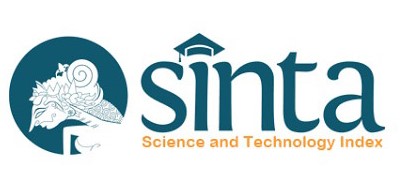Succesful Continuous Renal Replacement Therapy (CRRT) for Acute Kidney Injury (AKI) with Septic Shock Underwent Long Coronary Artery Bypass Graft Procedure (CABG)
Abstract
Background :
AKI occurs in significant numbers of patients undergoing cardiopulmonary bypass surgery for coronary artery disease. Patient with AKI requiring renal replacement therapy (RRT) after cardiac surgery were at a higher risk of postoperative mortality. One of mode of RRT is CRRT. CRRT can keep hemodynamic of the patient stable, excellent control of azotemia, sypport beneficial immunomodulation,increase clearance of inflammatory mediators and potentially less ongoing or repeated renal ischaemia. As an alternative to traditional intermittent hemodialysis, CRRT has now emerged as the leading form of RRT for patients with AKI post CABG because the CRRT can keep hemodynamic still stable.
Case: We report a case report of patient who had long aorta cross clamp in CABG procedure. He got AKI with shock condition during hospitalization in ICU, had been done with CRRT and had good response after the procedure.
Discussion: The incidence of AKI after cardiac surgery in this patient may increase with several risk factors, such as surgical bleeding, diabetes mellitus, pre operative renal dysfunction, low LVEF, the use of CPB machine and infection. An imbalance between renal oxygen supply and oxygen demand will induce AKI. This patient had done CRRT and showed good clinical and laboratory condition after that.
Conclusion : CRRT is a good choice for AKI patient post CABG procedure with shock condition.
Keywords
Full Text:
PDFReferences
Lagny MG, Jouret F, Koch JN, et al. Incidence and outcomes of acute kidney injury after cardiac surgery using either criteria of the RIFLE classification. BMC Nephrol. 2015;16:76.
Kowalik MM, Lango R, Klajbor K, et al. Incidence- and mortality-related risk factors of acute kidney injury requiring hemofiltration treatment in patients undergoing cardiac surgery: a single-center 6-year experience. J Cardiothorac Vasc Anesth. 2011;25(4):619–624.
Hein OV, Birnbaum J, Wernecke KD, et al. Three-year survival after four major post-cardiac operative complications. Crit Care Med. 2006;34(11):2729–2737.
Liu C, Zhang HT, Yue LJ, et al. Risk factors for mortality in patients undergoing continuous renal replacement therapy after cardiac surgery. BMC Cardiovasc Disord. 2021 Oct 21;21(1):509.
Koyner JL, Murray PT. Mechanical ventilation and the kidney. Blood Purif. 2010;29(1):52–68.
van den Akker JP, Egal M, Groeneveld AB. Invasive mechanical ventilation as a risk factor for acute kidney injury in the critically ill: a systematic review and meta-analysis. Crit Care. 2013;17(3):R98.
Joe J, Samsu Z, Retno A, Zahara R, Prakoso R, Ardiyan A. Risk of Acute Renal Failure Requiring Renal Replacement Therapy after Cardiac Surgery. Indonesian Journal of Cardiology. 2014; 34(3): 147-53.
Fuhrman DY, Nguyen LG, Sanchez-de-Toledo J, et al. Postoperative acute kidney injury in young adults with congenital heart disease. Ann Thorac Surg. 2019;107(5):1416–20
Oh TK, Song IA. Postoperative acute kidney injury requiring continuous renal replacement therapy and outcomes after coronary artery bypass grafting: a nationwide cohort study. J Cardiothorac Surg. 2021; 16: 315
Lugones F, Chiotti G, Carrier M, et al. Continuous renal replacement therapy after cardiac surgery. Review of 85 cases. Blood Purif. 2004;22(3):249-55
Lewington AJ, Cerda J, Mehta RL. Raising awareness of acute kidney injury: a global perspective of a silent killer. Kidney Int. 2013;84(3):457–67.
Rosner MH, Okusa MD. Acute kidney injury associated with cardiac surgery. Clin J Am Soc Nephrol. 2006;1(1):19–32.
Vives M, Hernandez A, Parramon F, et al. Acute kidney injury after cardiac surgery: prevalence, impact and management challenges. Int J Nephrol Renovasc Dis. 2019;12:153–66.
Priyanka P, Zarbock A, Izawa J, Gleason TG, Renfurm RW, Kellum JA. The impact of acute kidney injury by serum creatinine or urine output criteria on major adverse kidney events in cardiac surgery patients. J Thorac Cardiovasc Surg. 2021;162(1):143-151.e7.
Baldwin I, Bellomo R, Naka T, Koch B, Fealy N. A pilot randomized controlled comparison of extended daily dialysis with filtration and continuous veno venous hemofiltration: Fluid removal and hemodynamics. Int J Artif Organs. 2007;30:1083 9.
Kielstein JT, Schiffer M, Hafer C. Back to the future: Extended dialysis for treatment of acute kidney injury in the Intensive Care Unit. J Nephrol. 2010;23:494 501.
Mishra SB, Singh RK, Baronia AK, Poddar B, Azim A, Gurjar M. Sustained low efficiency dialysis in septic shock: Hemodynamic tolerability and efficacy. Indian J Crit Care Med.2016;20:701 7.
Lobo VA. Renal Replacement Therapy in Acute Kidney Injury: Which Mode and When?. Indian J Crit Care Med. 2020 Apr;24(Suppl 3):S102-S106.
Fatoni, AZ, Kestriani ND. Acute Kidney Injury pada Pasien Kritis. Majalah Anestesia dan Critical Care. 2018. 36;2 :64-76.
DOI: http://dx.doi.org/10.21776/ub.jap.2022.005.01.05
Refbacks
- There are currently no refbacks.

This work is licensed under a Creative Commons Attribution 4.0 International License.









.png)

